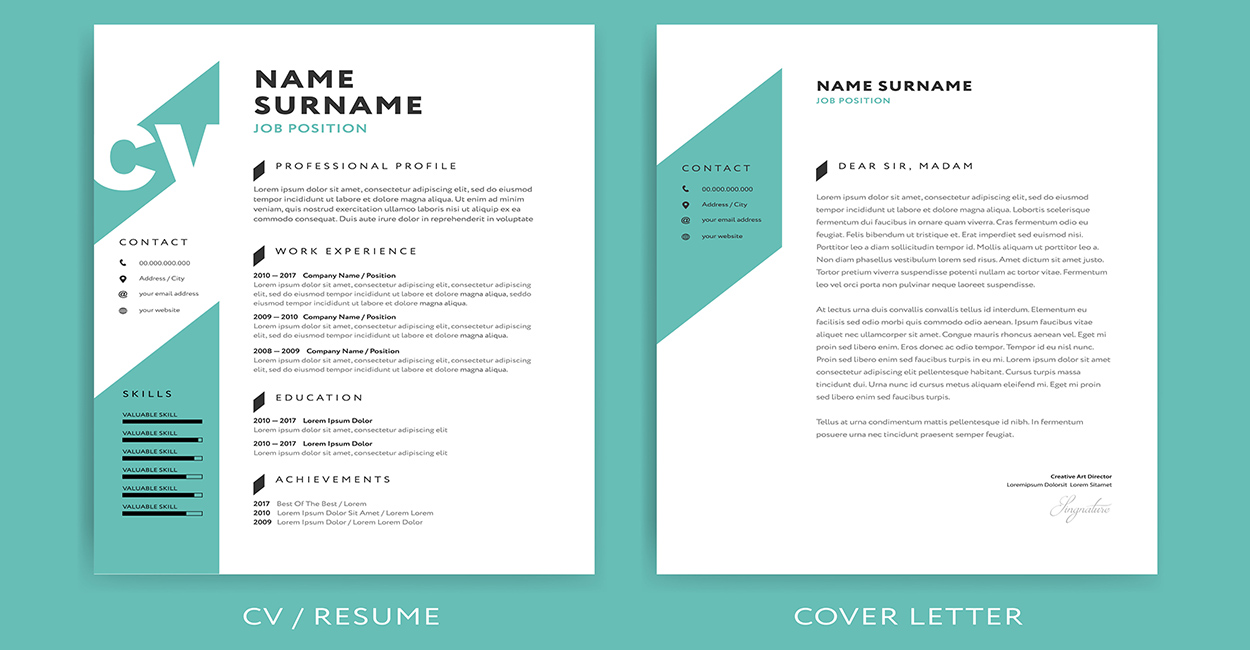A Guide To Building A Cover Letter For The UK Job Market
- In Career Advice
- 18 Oct 2021, 11:20 PM

Introduction
A great cover letter is a must if you're applying for a job in the United Kingdom. The goal of your cover letter is to spark the employer's interests, identify yourself as a serious candidate for the position, and persuade the recruiter that you are deserving of an interview. A strong cover letter will pique the employer's interest and encourage them to study your CV.
Writing a cover letter might be overwhelming, but it's an integral part of the application process. A cover letter gives your CV context and allows you to promote your abilities and expertise to potential employers. It also allows you to express yourself and explain why you are the ideal candidate for the position. The goal is to tailor the cover letter to highlight what the recruiter is looking for in a candidate.
So, what is a cover letter?
When applying for a job, you must provide a cover letter with your CV. It goes into further depth on how your skill set matches the role, what you can contribute to the company, and why you deserve the job. Cover letters enable recruiters and hiring managers to have a better idea of your qualifications for the position. Drafting a perfect cover letter can be achieved through emphasising appropriate skills and experience, and so, you should always create your cover letter with the post in mind.
Cover letters should not resemble a wordy version of your CV but complement your CV rather than duplicate it. To avoid being identified by spam filters, send properly drafted text in the email body rather than an attachment.
Things to justify in the cover letter
Before drafting a compelling cover letter, you must first understand the basic format and critical elements to include.
While drafting the letter, include the following information:
1. At the top, your contact information
2. Details about the position you're interested in
3. Addressing the recruiter
4. What qualifies you for the role
5. Prior work experience relevant to the role
6. Identify a call-to-action and reiterate your interest in the topic
7. Sign your name
After understanding which points to cover, you will have to research the company, position, and structure and format a cover letter.
Best way to start with a cover letter
Take some time to research the position and organisation you're applying for, and use that knowledge to build your cover letter.
You should find out the following information before drafting a cover letter:
- What is the business's purpose?
- What competitors does it have?
- Who is the audience of the company?
- What exactly does the job entail?
- What are the needed abilities?
The cover letter is your opportunity to show the company how your skills and abilities align with its requirements after you've sorted out your answers to these questions.
Not only will conducting research provide you with the information you need to customise your cover letter to the firm's requirements, but it will also demonstrate that you are passionate about the position and the organisation.
Structuring a cover letter
While thoroughly reading the job description is necessary, it is frequently insufficient. It is critical that you research drafting your cover letter. Keep your cover letter short and sweet while emphasising your qualification for the position. Subconsciously, make sure of addressing the following topics:
- the person reading your cover letter
- the culture of the organisation
- Information about the company and the industry it operates in, including its market position and competitors
- How five-year strategic goals of the organisation will benefit your development
Although there are no hard and fast rules regarding the structure of your cover letter, making sure it flows nicely is vital if you want to impress recruiters.
Here's a general idea of what to put in a cover letter:
- First paragraph - What's the purpose of contacting?
The first paragraph should be brief and to-the-point, stating why you're contacting the recruiter. It's also a good idea to mention where you saw the ad for the proposed job opportunity or mention the person's name who referred you to apply.
Example: I'd want to apply for the IT Manager position listed on Reed.co.uk. Please find my curriculum vitae included for your review.
- Second paragraph - Why are you qualified for this position?
Briefly summarise your relevant professional and academic qualifications, carefully mentioning all of the abilities specified in the job description.
Example: As you can see from my attached CV, I have over three years of experience in the IT sector, and I feel the knowledge and skills I've gained over that time qualify me for the position.
- Third paragraph - What can you offer to the business?
Grab the opportunity to highlight what you can accomplish for the firm. Outline your professional objectives (making sure they're relevant to the job you're looking for) and expand on crucial aspects in your CV, providing examples to back up your abilities.
Example: In my present job as Senior Marketing Executive at XYZ Software Ltd, I was responsible for growing inbound customer inquiries for our B2B product lines. I contributed to the increase of 186 per cent customer inquiries in less than a year, resulting in a 53.2 per cent revenue growth for the company.
- Last paragraph – Emphasise
While drafting this paragraph, remember to repeat your interest in the position and why you'd be a good match for it. It's also an excellent opportunity to let the company know you'd want to meet for an interview.
Example: I am confident that I can bring this level of success to your company and assist XYZ Software LTD to cement its position as one of the fastest-growing software firms in the UK. With my experience and skills, I am sure that I will contribute to the company as soon as feasible.
Thank you for your time and consideration. I'm looking forward to meeting with you to talk more about my application.
After you've completed it:
- Go through the content again and remove any irrelevant words or sentences.
- Don't waste space by rehashing what your CV already says.
- Only include your present or expected pay if the company specifically requests it in the job description. If this information is required, add it between the third and final paragraphs.
Please save the file with a PDF file extension unless the job posting specifies otherwise (for example, it may require you to submit your CV and cover letter as a Word document). Recruiters will be able to view this format and read it on any system.
Formatting a cover letter
The best font for a cover letter should be simple to read and match your resume font. Arial, Cambria, Calibri, Times New Roman, Verdana, and Courier New are among the most popular options. Stick to one typeface with the set font size to a maximum of 12 pt. and a minimum of 10.5 pt. You must allow space between each section of your cover letter for proper cover letter spacing. Your cover letter should have a margin of 1" to .5". It is acceptable to alter the margins if you're running out of room. Avoid making drastic changes that make your letter appear excessively thin or overly full.
Your cover letter should be between half and one full page long. Consider dividing your cover letter into three or four short paragraphs, each taking no longer than 10 seconds to read.
Addressing a personnel through cover letter
Always make an effort to address your cover letter to the individual who will be reading it. Keep in mind that if you send your message to the correct individual, you're more likely to get a response.
If you can't identify a specific contact, use a generic greeting like:
- Dear Hiring Manager
- Dear Sir/Madam
- Dear Human Resources Director
On the other hand, use general greetings only after all other options for locating a specified contact have been exhausted.
What should be the ideal length?
- Cover letters should have the right length as well as use coherent paragraphs.
- Too lengthy, and you risk rambling (and boring the recruiter as well); too short, and you're unlikely to have addressed everything.
- Ideally, it would be best to aim for half a side of the A4 sheet (or one page at most).
Concluding the letter
The way you conclude your cover letter is determined by how you wrote it. Sign off with 'Yours truly' if you mention a specific contact. And you should finish it with 'Yours faithfully' if you're using a general greeting.
In summary, to bag a competitive position in the UK job market, you will have to research and concisely build your cover letter along with your CV. Use our concluding checklist to ensure that your letter is as powerful as possible before sending it out.
- Done your research to be clear about what the employer is looking for in a candidate?
- Explained how you meet the required criteria for the job?
- Drafted it to fit in one page or less?
- Proofread it and ensured that the language is succinct and clear?
- Addressed it to the right person?
- Described why you are interested in the job in a convincing way?
- Ended with a summary of why you are perfect for the offered role?





